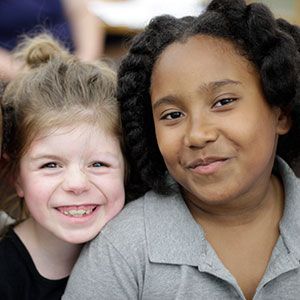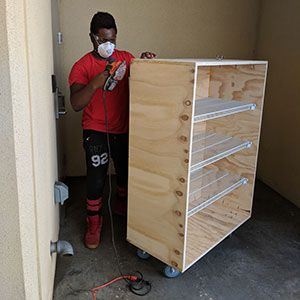
Did you know that food banks across the country work closely with libraries, schools and other community organizations?
“You have no idea what this means for our family,” said one parent. “Summer [is] so hard—now I know I’ll have something in the fridge for the next week.” This is just one of many families that don’t have to worry about food thanks to The Community Food Bank of Eastern Oklahoma and the YMCA of Greater Tulsa. These organizations began working together because they both have a large presence in eastern Oklahoma and strong relationships with many local families. Today, they are providing meals and groceries to households in need through several programs, including free family farmers markets. In recent months, the farmer's markets have put food into the hands of more than 1,300 children and 1,000 adults—equating to roughly 16,000 pounds of groceries. Many struggling households that may have been unable to have dinner together now have the groceries they need to enjoy a family meal. The food bank and the YMCA plan to reach even more Oklahomans facing hunger in order to bring more families together for dinner.
You may think of libraries as places that provide books and encourage reading, but some of them also help food banks reach hungry children. Libraries have made it possible for Northern Illinois Food Bank to reach kids in need like Leo (pictured). Well-organized and passionate about serving their communities, several libraries lend a hand by distributing food from the food bank. Today, hungry children and families are getting meals through library programs like bookmobiles, which make stops in high-need neighborhoods to promote reading and provide meals or bags of groceries. Libraries are also hosting summer family markets, which provide free groceries to families in need and free lunches for kids so they don’t have to skip meals during the summer months.
Sometimes partnerships are developed after a disaster hits a community. Last fall, many people impacted by the season’s brutal hurricanes came to Second Harvest Food Bank of Central Florida for help. Following Hurricane Maria’s destruction, some Puerto Rican families made the difficult decision to move to the U.S. mainland to get back to work and needed support during the transition. Florida communities hit by Hurricane Irma also needed a helping hand to get back on their feet. To quickly respond to growing local needs, the food bank reached out to  schools in their community to see if they could open food pantries on campus, but they kept hearing that there just wasn’t enough space. Finally, a solution emerged: The Mission Continues, a nonprofit that helps reintegrate veterans into their communities through volunteering, offered to deploy their volunteers to create portable food pantry units (pictured). That way, schools could provide food pantries to low-income students without permanently giving up classroom or storage space. Eight schools opened food pantries that distributed 25,000 pounds of food this past school year. Nine more schools have since signed up to offer food pantries to their students for the first time. By working with both local schools and nonprofits, the food bank is providing food to many more students and families as they continue to recover from last year’s brutal hurricanes.
schools in their community to see if they could open food pantries on campus, but they kept hearing that there just wasn’t enough space. Finally, a solution emerged: The Mission Continues, a nonprofit that helps reintegrate veterans into their communities through volunteering, offered to deploy their volunteers to create portable food pantry units (pictured). That way, schools could provide food pantries to low-income students without permanently giving up classroom or storage space. Eight schools opened food pantries that distributed 25,000 pounds of food this past school year. Nine more schools have since signed up to offer food pantries to their students for the first time. By working with both local schools and nonprofits, the food bank is providing food to many more students and families as they continue to recover from last year’s brutal hurricanes.
We can help so many more people when we work together. The Feeding America network is committed to building partnerships to meet the need for meals across the country. After all, it takes many people working together to create thriving communities. Want to know more about our partnerships? Sign up for our email newsletter.
*Photos provided courtesy of The Community Food Bank of Eastern Oklahoma, Northern Illinois Food Bank and Second Harvest Food Bank of Central Florida.
